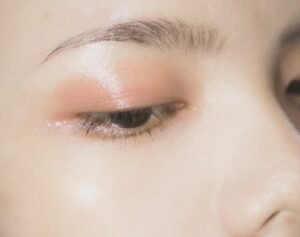This post contains affiliate links.
There’s been a growing buzz in skincare, especially when it comes to using seaweed face mask for hydration. People are even calling it ocean skincare and let’s be honest, doesn’t that sound soothing already? But here’s the thing: how does it actually feel on the skin? And more importantly, does it deliver real, lasting hydration?
I got curious because with my super dry skin (and a not-so-casual relationship with retinoids), I’m always on the lookout for something that can restore that hydration balance. The idea of slathering on a seaweed-based mask? It sounds like it should work in theory.
Seaweed’s packed with humectants, minerals, and antioxidants, so the science adds up. But I wanted to try it out and see if the hydration is more than just surface-level. Is it just a spa-like experience, or can it actually help dry, parched skin bounce back over time?
Benefits of seaweed for skin
Seaweed has been getting a lot of attention lately for its skin benefits — and for good reason. There are actually different types of seaweed used in skincare, like kelp and red algae. If you’re into Korean skincare, you’ve probably noticed red algae popping up in a bunch of formulas.
So what does seaweed actually do for the skin? Well, it’s packed with antioxidants, which help protect your skin from environmental stress. It’s also great for moisture retention, especially red algae, which is known for helping the skin hold onto hydration and moisture.
Seaweed can help calm and reduce inflammation, making it a good pick for irritated or sensitive skin. They hydration and moisture retention benefits makes it a good choice for dry skin as well.
Another great thing about seaweed masks? They give you a bit of gentle exfoliation too. It’s like a natural way to detox your pores kind of like exfoliating but way more subtle.
The thing with active exfoliation is that while they’re effective, they can also leave your skin feeling dry or even irritated, especially if your skin is on the sensitive side.
They work by drawing out excess oil and unclogging pores actively. Seaweed, on the other hand, does it in a much gentler way. While it helps clear out the gunk, it also hydrates your skin at the same time.
So if you’re someone who’s been wanting to take a break from stronger actives, or just looking for a softer, more natural alternative, this might be your answer.
My experience
I had to try it for myself to see if seaweed skincare was actually worth the hype. So, I committed to using it consistently for a full month. And honestly? The results were pretty impressive, especially in terms of hydration.
Now, it really depends on the type of seaweed you go for. I specifically chose red algae because it’s known for its hydrating benefits. And this wasn’t just some random extract buried in the ingredients list — red algae was actually the main ingredient in my mask. That made a huge difference.
Over time, I could actually feel a shift in my skin. It looked more hydrated, felt plumper, and overall just healthier. Of course, consistency played a big role too. Like with most things in skincare, you’ve gotta stick with it to really see the benefits.
Seaweed for different skin types
There’s also been a lot of talk lately about seaweed helping with hyperpigmentation and even supporting collagen synthesis. Personally though? I’d still rely on actives when it comes to targeting those specific concerns. For me, seaweed’s strength really lies in hydration and calming the skin.
How often you use it totally depends on your skin type. Some people might do once or twice a week but because my skin’s super dehydrated, I’ve found that using it three times a week works best.
It’s also a great option if your skin is irritated. Seaweed masks don’t just hydrate, they have a naturally cooling and soothing effect. So if your skin’s feeling stressed or inflamed, they’re kind of a quick fix. You can actually feel that calm almost instantly after applying.
Seaweed vs hyaluronic acid
While hyaluronic acid is great for hydration, seaweed kind of takes it a step further. Like hyaluronic acid and glycerin, it draws moisture into the skin but the bonus is that it also has anti-inflammatory properties. That’s something you don’t really get with hyaluronic.
Plus, when you’re using seaweed in the form of brown algae, you’re getting skin-loving minerals like magnesium and calcium too. So that’s an added edge, hydration and nutrients in one go.
Now, I still use hyaluronic acid and reach for it pretty often, but usually on nights when I’m not using seaweed. I like to switch things up depending on what my skin is asking for. And another big plus? Seaweed contains polysaccharides, which help strengthen the skin barrier. That’s something my dry skin definitely appreciates.
If DIY is more your thing, there’s actually a simple seaweed mask you can make at home. All you need is powdered kelp, a bit of aloe vera, and honey, just mix it up in a bowl, and you’ve got yourself a homemade hydration pack.
But if you’re wondering what I personally use for seaweed masks, it’s the one from The Body Shop and Biodance. And honestly? The results are so good especially for hydration and moisture retention. It’s made with natural ingredients and does exactly what it promises. Every time I use it, my skin feels more plump and refreshed.
My favorite seaweed face mask for hydration
The one I’m currently using is the Biodance Refreshing Sea Kelp Real Deep Mask. It’s so good at hydrating my skin and keeping the water-oil balance in check. The main ingredients are sea kelp and deep sea water.
The fact that it keeps the oil in check makes it a perfect choice for those with oily and acne-prone skin. It’s calming and soothing, and it’s working great for my dry skin as well. So in my opinion, while this hydrates dry skin, it’s perfect for oily skin too.
It actually gives me better hydration than when I’m using hyaluronic acid on its own. And don’t get me wrong, hyaluronic acid is still a staple in my routine. But adding seaweed into the mix? It’s like the cherry on top.
Final takeaway
I’d definitely recommend seaweed to anyone dealing with dry, dehydrated, or irritated skin. It really checks all those boxes and the best part? It does it all without any side effects on my skin. The added bonus of being rich in antioxidants just makes it even more worth having in my routine.
If I had to rate it, I’d honestly give seaweed a solid 5 out of 5. It’s that good on my skin. Hydrating, calming, barrier-loving, it kind of does it all.
This post contains affiliate links.




